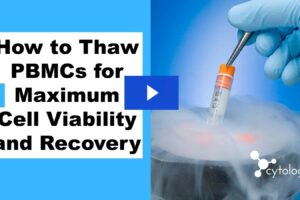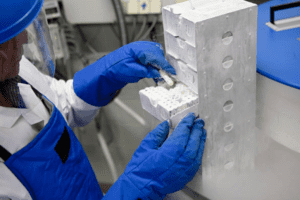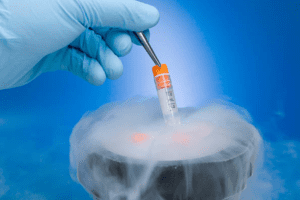Researchers often need to isolate lymphocytes and other mononuclear cells from whole blood to minimize interference in certain assays. Density gradient centrifugation is a common PBMC isolation method, but involves careful planning and skillfully applied lab techniques. This video describes the 8 steps you should follow to maximize PBMC recovery from whole blood and ensure high cell viability & purity.
Isolating PBMCs by density gradient centrifugation is based on the principle that different cellular components of blood have different densities and can be separated accordingly. This method requires careful layering of human blood over a density gradient medium, such as Ficoll-Paque™, with recovery of the mononuclear cell layer after centrifugation.
Best practices for each of the following steps are described in the video above so you can achieve optimal results when using PBMCs in downstream research assays and applications.
Key Reagents and Media
- Density gradient medium
- Phosphate-buffered saline (PBS)
- Balanced salt solution (BSS)
- Ethanol-70%
Steps for PBMC Isolation
Preparation
Follow all safety precautions, and ensure you have the required equipment, materials and reagents to perform the isolation protocol
Dilute Blood Sample
Dilute the blood sample to a 1:1 volume ratio with PBS
Layer Over Density Gradient Medium
Carefully layer the diluted blood sample over density gradient medium
Centrifugation
Place the sample in a centrifuge and spin per the gradient medium manufacturer’s recommendation
Recover PBMC Layer
Harvest the thin layer of PBMCs that will form in the sample following centrifugation
Primary Wash
Wash the recovered PBMCs by mixing in 2-3x volume of PBS and centrifuging
Secondary Wash
Wash the PBMCs a second time in PBS to remove any remaining contaminants such as platelets and density gradient medium
Resuspend PBMCs in PBS or BSS
Resuspend the PBMC pellet in an appropriate volume of PBS or BSS for cell counting, cryostorage or other applications
Related Resources
Interested in learning more on this topic? Download our eBook for more tips and tricks on isolating PBMC for your research.






